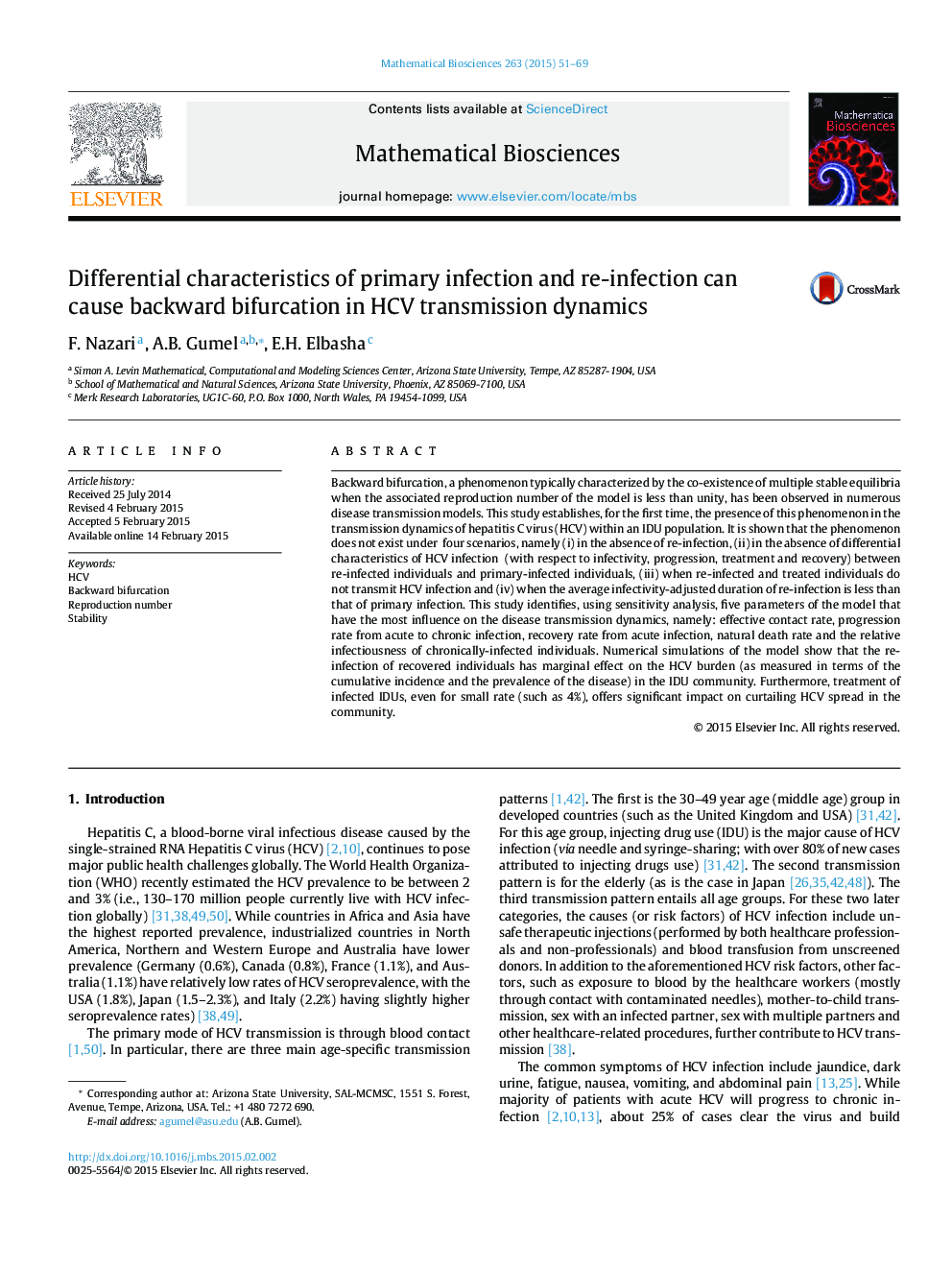| کد مقاله | کد نشریه | سال انتشار | مقاله انگلیسی | نسخه تمام متن |
|---|---|---|---|---|
| 6371969 | 1624017 | 2015 | 19 صفحه PDF | دانلود رایگان |
عنوان انگلیسی مقاله ISI
Differential characteristics of primary infection and re-infection can cause backward bifurcation in HCV transmission dynamics
دانلود مقاله + سفارش ترجمه
دانلود مقاله ISI انگلیسی
رایگان برای ایرانیان
کلمات کلیدی
موضوعات مرتبط
علوم زیستی و بیوفناوری
علوم کشاورزی و بیولوژیک
علوم کشاورزی و بیولوژیک (عمومی)
پیش نمایش صفحه اول مقاله

چکیده انگلیسی
Backward bifurcation, a phenomenon typically characterized by the co-existence of multiple stable equilibria when the associated reproduction number of the model is less than unity, has been observed in numerous disease transmission models. This study establishes, for the first time, the presence of this phenomenon in the transmission dynamics of hepatitis C virus (HCV) within an IDU population. It is shown that the phenomenon does not exist under four scenarios, namely (i) in the absence of re-infection, (ii) in the absence of differential characteristics of HCV infection (with respect to infectivity, progression, treatment and recovery) between re-infected individuals and primary-infected individuals, (iii) when re-infected and treated individuals do not transmit HCV infection and (iv) when the average infectivity-adjusted duration of re-infection is less than that of primary infection. This study identifies, using sensitivity analysis, five parameters of the model that have the most influence on the disease transmission dynamics, namely: effective contact rate, progression rate from acute to chronic infection, recovery rate from acute infection, natural death rate and the relative infectiousness of chronically-infected individuals. Numerical simulations of the model show that the re-infection of recovered individuals has marginal effect on the HCV burden (as measured in terms of the cumulative incidence and the prevalence of the disease) in the IDU community. Furthermore, treatment of infected IDUs, even for small rate (such as 4%), offers significant impact on curtailing HCV spread in the community.
ناشر
Database: Elsevier - ScienceDirect (ساینس دایرکت)
Journal: Mathematical Biosciences - Volume 263, May 2015, Pages 51-69
Journal: Mathematical Biosciences - Volume 263, May 2015, Pages 51-69
نویسندگان
F. Nazari, A.B. Gumel, E.H. Elbasha,